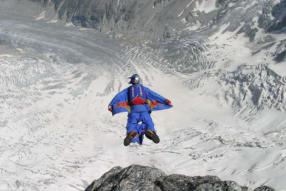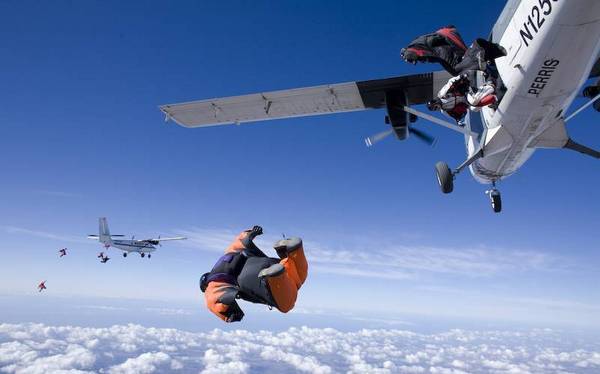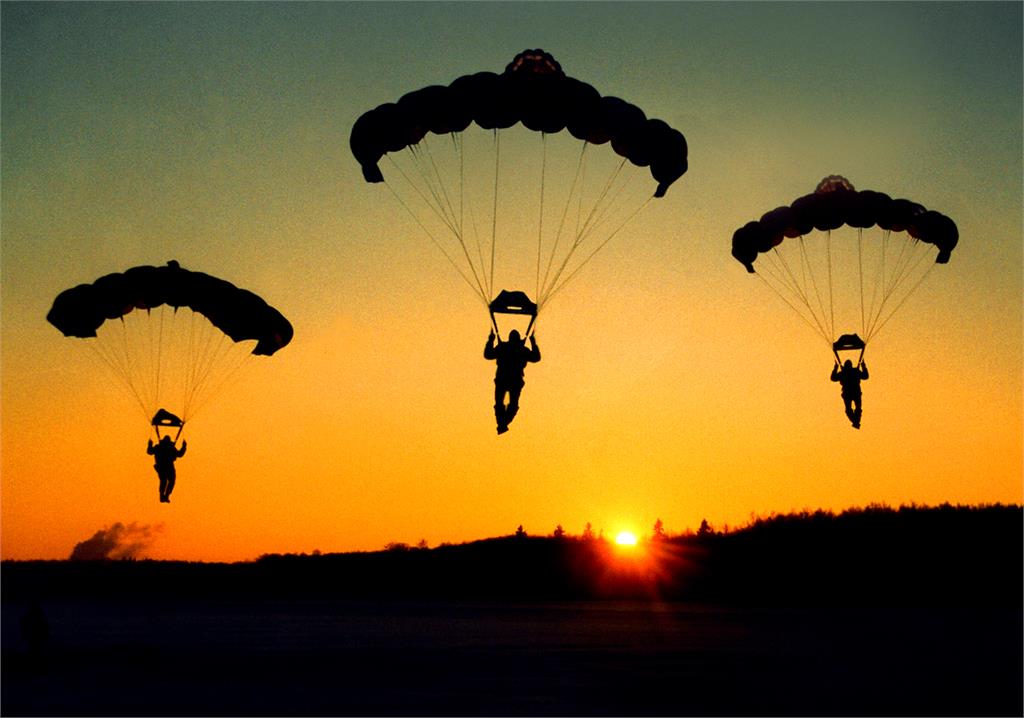Landing accuracy jumps
 When performing individual jumps for accuracy of landing, the skydiver must:
When performing individual jumps for accuracy of landing, the skydiver must:
to conduct a rigorous analytical calculation of the separation point, control points, monitoring them on the ground by stopwatch and altimeter;
tune in and mentally imagine the whole jump, given the height of the parachute, the direction and strength of the wind along the heights, as well as the approach to the target;
pass control points on the ground at a given height;
check with a dome the direction and strength of the wind, given that in the surface layer the direction and strength of the wind often differ from the actual conditions at altitude;
observe and correctly analyze the work of parachutists descending in front;
Know exactly the vertical and horizontal speeds of your dome. In training for competitions, try to use only one dome and have a preliminary calculation of the heights at control points for wind from 0 to 10 m / s (the distance and place of control points from the circle varies depending on the strength and direction of the wind);
reach the last control point (base) at the average speed of the dome (half-pressed by control lines), concentrate as much as possible, clarify the direction of the wind along the cone, get into the wind target and sight the target, while strictly monitoring lateral drift and eliminating it;
clearly place the heel or toe of one leg on the target, and slightly raise the other;
ensure safety when landing.
Typical errors:
incorrect calculation of the separation point; failure to complete the jump plan;
inability to concentrate or excessive tension on the decisive part of the jump when approaching the target and processing the target, hence the sharp work with the dome, the loss of the feeling of the dome and “zero”;
ignorance of the features of your parachute;
excessive height at control points due to excessive caution;
violation of security measures in order to achieve a better result.
Security measures
The minimum height of the full disclosure of the main parachute should be at least 600 m, and for parachutes of the type PO-9 – 800 m.
Correct calculation of the installation height of the safety device taking into account the instrumental error and atmospheric pressure. For athletes with less than 50 jumps, the safety device is also installed on a reserve parachute, while the difference in installation heights on the devices of the main and reserve parachutes should be at least 300 m.
Mandatory inclusion of a safety device on the main parachute with an exhaust halyard.
Availability on the reserve parachute, depending on the task of the knife, stopwatch and altimeter. Checking their performance.
In case of failure of the main parachute, its uncoupling and deployment of a reserve parachute. It should be noted that with the clear and correct actions of the parachutist to unhook and open the reserve parachute, it takes up to 4 s (200 m).
Jump control from the ground.
Caution (all-round visibility) and attentiveness during the entire jump, especially in the landing area.
Compliance with landing rules.



